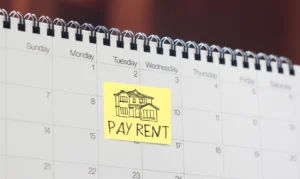How and When to Use a Month to Month Lease
 As a landlord or property manager, you have the opportunity to determine what kind of lease agreement works best for you and your rental property. The typical rental agreement allows a tenant to rent a property for 12 or 18 months. Yet that may not be the right fit for you. In that case, you might consider the month to month lease.
As a landlord or property manager, you have the opportunity to determine what kind of lease agreement works best for you and your rental property. The typical rental agreement allows a tenant to rent a property for 12 or 18 months. Yet that may not be the right fit for you. In that case, you might consider the month to month lease.
A month to month lease agreement offers increased flexibility for both the property owner and tenant. If you’re thinking of implementing a month to month lease agreement, keep reading as we break down exactly what it is, when you might use it and more.
What is a month to month lease?
All landlords will agree that not all lease agreements are built the same. As the name suggests, a month to month lease agreement, also known as month by month, is a short-term rental agreement that typically lasts for 30 days.
Because this type of lease is considerably shorter than the more common year-long rental agreement, it gives both parties the ability to alter or terminate the lease with 30 days of proper notice — this varies depending on the rental property’s local or state law. Usually, a month to month lease is automatically renewed each month unless there is a notice of non-renewal.
For the most part, a landlord must still give the tenant a 30 day notice to do any of the following during a month to month lease agreement:
- Increase monthly rent
- Send an eviction notice
- Change lease agreement terms (e.g. pet policy)
Month to month lease vs. fixed term lease
A fixed term lease is a long-term rental agreement that can span between 12 to 18 months. Some tenants may even reach out to a landlord to request a 2-year fixed term lease.
This type of lease is more rigid than a month to month lease. It’s also more common.
While a month to month lease is usually automatically renewed, a landlord must send a lease renewal offer 90 days before their fixed term lease ends. On the plus side for landlords, a fixed term lease ensures that the tenant will rent your property for the agreed-upon amount of time and price or be held liable if they choose to break the lease early.
This can help a landlord ensure their rental property is occupied and paid for consistently, unlike a month to month lease.
When do you use a month to month lease?
There are various reasons why a rental property owner or manager may choose to use a month to month lease for their real estate business. Some examples include:
- The property is being marketed as a vacation rental.
- The property owner is renting out their primary residence.
- There’s a high rental population in the area.
- There are more opportunities to raise monthly rent.
- It’s easier to non-renew leases with problem tenants.
- Lease agreements can be altered sooner rather than later.
- If a fixed term lease ends, but tenants request additional time to find a new property.
Pros and cons of a month to month lease
Regardless of the situation, it’s up to the landlord to weigh the pros and cons of a month to month lease before making any arrangements with a tenant. Explore the common advantages and disadvantages that may come with a month to month lease below:
Pros
Flexibility
Unlike a fixed term lease — which can lock a landlord into a long-term tenancy agreement — a month to month lease can be altered or ended as long as the landlord gives proper written notice. This means you could choose to adjust your lease terms immediately after the notice period ends.
You can also gain increased control over which tenants are renting your property and screen for new prospective tenants in the near future. This can be a great opportunity for newer landlords that are seeking to test their tenant screening process. If any mistakes are made or lessons learned, the landlord can sooner adjust their rental process and lease agreement to reflect that.
If you’d just like to have the rental property empty occasionally for personal or miscellaneous reasons, a month-to-month lease agreement will definitely give you that flexibility.
Higher earning potential
It’s not best practice to consistently raise the monthly rent amount, but a month to month rental agreement does give you more opportunities to do so. This can increase your potential profitability.
Similarly, because month to month tenants are generally looking for temporary housing, they may be more likely to agree to higher, or premium, monthly rent than a long-term tenant. This is a huge benefit for landlords who are generally taking on more risk with the higher turnover rate of tenants in month to month lease agreements.
If you’d prefer not to raise rental prices for a month to month tenant versus a fixed term tenant, you may choose to add a move-in fee to cover the costs of tenant turnover.
Prioritize high-quality tenants
Not all tenants will treat a rental property with the same respect. Some may be disruptive to neighbors, consistently be late on payments or ignore agreed-upon lease terms. In these cases, a month to month lease offers an extra layer of security for the landlord because it allows them to terminate the lease by giving a 30-day notice to the tenant.
Meanwhile, if you find a tenant that fits your requirements and respects your rental property, you can choose to extend the month to month lease accordingly.
Cons
Inconsistent rental income
A month to month lease agreement only ensures rental income for the signed month. After that, the tenant may choose to end their lease and seek tenancy elsewhere, which means the landlord will have to quickly seek another prospective tenant.
This should always be top of mind when entering a month to month rental agreement.
High tenant turnover rate
An increased tenant turnover rate goes hand-in-hand with inconsistent rental income. Finding a new tenant within 30 days can be a difficult task. To make it easier, landlords should have a go-to tenant screening process to find high-quality tenants (i.e., tenants who pay rent on time and consistently).
Unknown vacancy dates
Depending on the situation, a month to month lease may leave the rental property tenancy up in the air due to the flexible end date. If you have a streamlined way to find tenants and screen them for your property, this may not be a problem. However, if this adds undue stress, it may be time to reassess whether a month to month lease is right for you.
AAOA landlord resources and more
Want 24/7 access to landlord forms, services, templates and more? With AAOA membership, you can optimize your real estate business for success.













 Accessibility
Accessibility